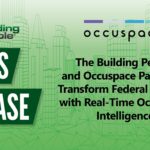
Reliability Centered Maintenance vs. Preventive Maintenance
Reliability-centered maintenance (RCM) and preventive maintenance (PM) are two different maintenance strategies that can be used for operating commercial buildings. The key differences between RCM and PM begin with focusing on critical equipment. RCM identifies only the necessary equipment most important for the facility’s operation, while PM typically applies to all equipment regardless of its criticality.
Set Up
When setting up your RCM program, you will apply a rigorous analysis process to identify the maintenance tasks needed to maintain critical equipment reliably and efficiently. PM typically relies on the manufacturer’s recommendations or industry best practices to determine maintenance tasks. While both are part of a scheduled maintenance routine, RCM attempts to get the most out of your labor costs while ensuring there is no critical system downtime.
Framework
RCM is a risk-based approach to maintenance, focusing on the potential consequences of equipment failure and the likelihood of failure. The RCM framework emphasizes condition-based maintenance, which involves monitoring the condition of equipment to determine when maintenance is needed. At the same time, PM relies on scheduled maintenance intervals without considering prior analysis before engaging in the activities. In contrast, PM is generally based on a fixed schedule of maintenance activities.
Strategy
The RCM strategy centers on the cost-effectiveness of maintenance tasks by balancing the upfront cost against the cost of failure. The PM strategy may only sometimes consider the cost-effectiveness of maintenance tasks just because the task will need to be done using a regimented schedule to ensure you are always staying ahead of any downtime issues.
In summary, RCM and PM are two different maintenance strategies that can be used for operating commercial buildings. RCM is a more focused, analysis-based, and risk-based approach emphasizing condition-based maintenance and cost-effectiveness. At the same time, PM is a more general approach based on fixed schedules and industry best practices that avoids risk but may come at a higher premium.







